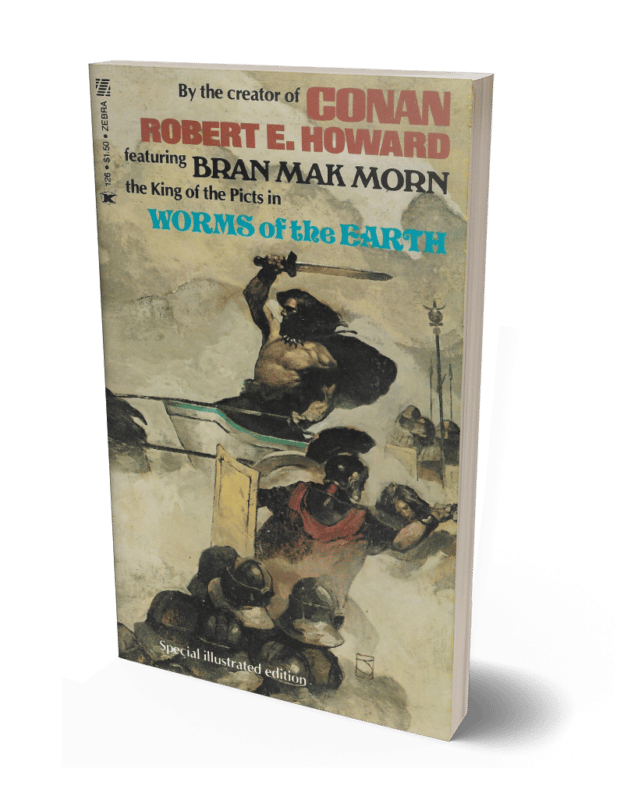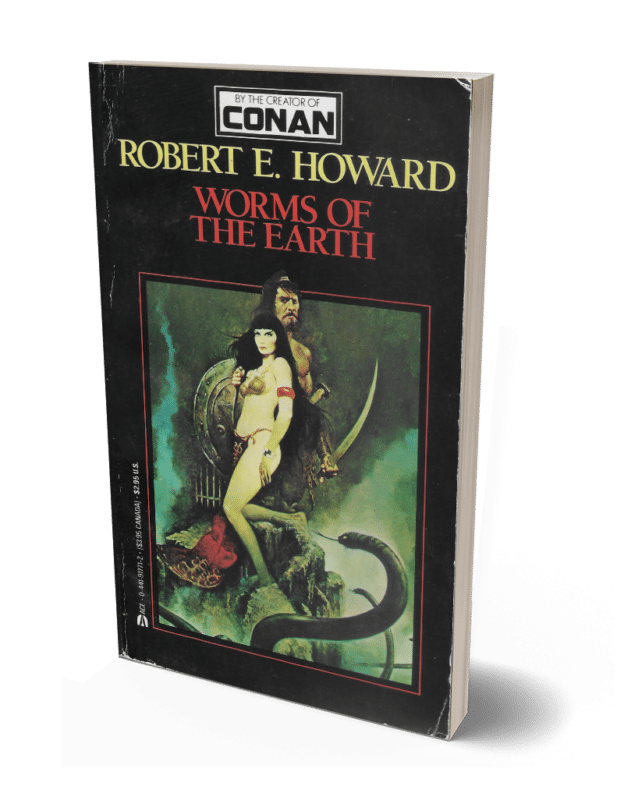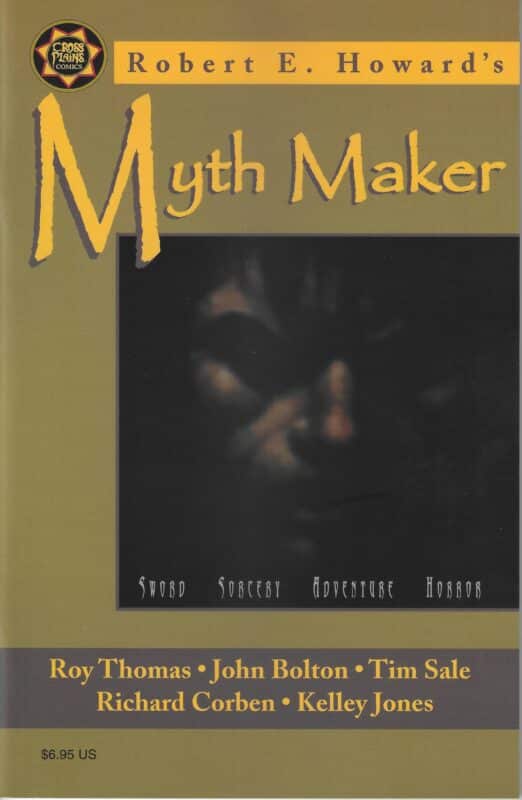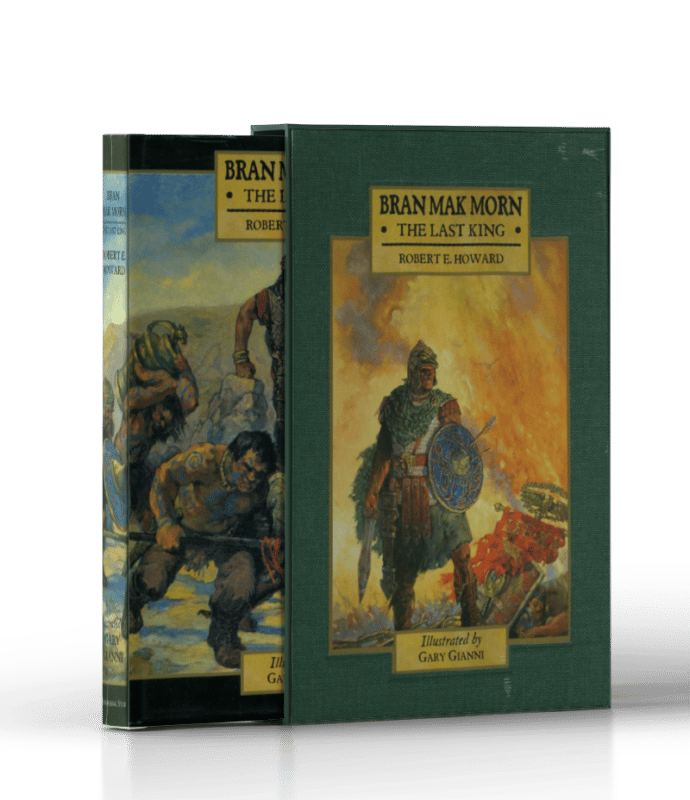Introduction
Men of the Shadows is a story/novelet in the Bran Mak Morn series. It was rejected by Weird Tales in 1926. Written circa 1925-1926.
From a letter from Farnsworth Write dated March 16th, 1926 we learn:
Dear Mr. Howard:-
I thoroughly enjoyed “Men of the Shadows,” but I fear I can not use it in Weird Tales. It is too little of a “story,” despite the vigorous action in the opening pages. It is rather a chronicle of a tribe, a picture of the evolution of a race; and thereby it lacks the suspense and thrill that a story of individual conflict and hopes and fears and drama would have.I do not know of any magazine that would take a story like this, unless possibly Frontier. But if you send it to Frontier, I suggest that you first clarify the conflict between Bran Mak Morn and the wizard, on page 11, for the reader is left in the dark as to what happened, as to what Bran Mak Morn did to cause the wizard to give up.
Published in:
- BRAN MAK MORN, Dell, September 1969
- WORMS OF THE EARTH, Grant, 1974
- SAVAGE SWORD OF CONAN #102, Marvel, du (part 1 of 4)
- SAVAGE SWORD OF CONAN #103, Marvel, du (part 2 of 4)
- SAVAGE SWORD OF CONAN #104, Marvel, du (part 3 of 4)
- SAVAGE SWORD OF CONAN #106, Marvel, du (part 4 of 4)
- TERRA FANTASY 3: HERRSCHER DER NACHT, Erich Pabel Verlag KG, January 1975 (German)
- WORMS OF THE EARTH, Zebra, July 1975 (1st printing)
- WORMS OF THE EARTH, Zebra, 1975 (Canadian edition)
- WORMS OF THE EARTH, Zebra, August 1975 (2nd printing)
- TERRA FANTASY 3: HERRSCHER DER NACHT, Erich Pabel Verlag KG, August 1977 (2nd printing)(German)
- WORMS OF THE EARTH, Orbit, 1976
- WORMS OF THE EARTH, Zebra, April 1976 (3rd printing)
- WORMS OF THE EARTH, Zebra, January 1977 (4th printing)
- WORMS OF THE EARTH, Ace, June 1979 (1st printing)
- BRAN MAK MORN, NeO, November 1982 (French)
- KÖNIG DER PIKTEN, Bastei Verlag, Winter 1984 (German)
- BRAN MAK MORN, NeO, January 1985 (French, 2nd printing)
- WARRIORS OF THE GLENN, Vernon Clark, May 1985 (excerpt only) [Distributed in REHUPA #75]
- TYGRYSY MORSKIE, Klubowe, 1986 (Polish)
- WORMS OF THE EARTH, Ace, September 1987 (2nd printing)
- GUSANOS DE LA TIERRA, Ediciones Martinez Roca, 1987 (Spanish)
- TYGRYSY MORZA, Pomorze, 1990 (Polish)
- BRAN MAK MORN, Fleuve Noir, February 1993 (French)
- TYGŘI MOŘE, Laser Books, 1993 (Czech)
- ROBAKI ZIEMI, Wydawnictwo PiK, 1994 (Polish)
- BRAN MAK MORN, Baen, January 1996 (restored text)
- TYGŘI MOŘE, Laser Books, 1996 (Czech, 2nd printing)
- HŐSÖK KORA, Valhalla Páholy Könyvklub, 1997 (Hungarian)
- ROBERT E. HOWARD’S MYTH MAKER, Cross Plains Comics, June 1999 (graphic adaptation)
- BRAN MAK MORN, Laser Books, 2000 (Czech)
- BRAN MAK MORN: THE LAST KING, Wandering Star, 2001
- BRAN MAK MORN: THE LAST KING, Del Rey, June 2005
- BRAN MAK MORN: THE LAST KING, Science Fiction Book Club, June 2005
- BRAN MAK MORN, Arnoldo Mondadori Editore, October 2009 (Italian)
- BRAN MAK MORN, L’INTÉGRALE, Bragelonne, November 2009 (French)
- BRAN MAK MORN: THE LAST KING, Tantor Media, Inc., June 2010 (audio)
- BRAN MAK MORN ÉS A PIKTEK, Delta Vision Kft., August 2012 (Hungarian)
- BRAN MAK MORN ÉS A PIKTEK, Delta Vision Kft., November 2012 (Hungarian)
- БРАН МАК МОРН, ПОСЛЕДНИЙ КОРОЛЬ. КУЛЛ, ВЫХОДЕЦ ИЗ АТЛАНТИДЫ (BRAN MAK MORN: THE LAST KING. KULL: NATIVE OF ATLANTIS), Eksmo, May 2014 (Russian)
- BRAN MAK MORN. O ÚLTIMO REI DOS PICTOS, Pipoca e Nanquim, March 2021 (Portuguese)









